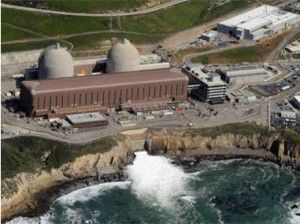If nothing else, Japan’s recent tragedy has brought the risk of current nuclear power plants back into focus. While it’s far to early to tell just how grave the Fukushima situation truly is, it is obvious that our best laid plans are inadequate as they relate to engineering facilities to withstand cataclysmic scale events.
Few places on the globe are as well prepared as Japan for earthquakes and the possibility of subsequent tsunamis. However, in spite of their preparedness — which was evidenced by the remarkably small number of casualties given the nature of the events that took place (can you imagine how many people would have perished had this same disaster struck somewhere else in the world?) — Japan’s ability to manage a damaged nuclear power plant was severely compromised.
As frightening as Japan’s situation is, what ought to frighten us even more is that there are many more nuclear power plants in equally vulnerable locations all over the globe. In California, for example, both the San Onofre and Diablo Canyon facilities are right on the coast (they both use ocean water for cooling) and the Diablo Canyon facility in particular is perilously close to a major fault.
Given what we’ve seen in Japan, the widely varying degrees of preparedness around the world, the age of many of the existing power plants and the consequences for even a single catastrophic containment failure, shouldn’t we be taking a long, hard look at nuclear power as a viable means of providing energy for the planet? Have we learned so little from Three Mile Island, Chernobyl, and now Fukushima? Just how capable are we [really] of dealing with a second, a third or a fourth disaster of this type? (and what if they were to happen simultaneously?) With so many existential risks completely beyond our control, does it make sense to add another one when there are other, lower risk alternatives to nuclear energy within our reach?
Below is a Pearltree documenting the situation and management of the damaged Fukushima reactors. Obviously, the news is grave, but imagine if this same situation had transpired in Chile.
NOTE: to see the contents of any of the links in this pearltree, just mouse-over the pearl. To see the whole page, simply click it.

Have some perspective. Only very old, obsolete designs for nuclear power plants have any destructive potential. Unfortunately, scare-mongering prevents building new nuclear plants, which is the only thing that would let us get rid of the old ones. Compared to dumping more carbon into the atmosphere, nuclear power is quite safe.
You also have a very wrong idea about the scale of the harm when bad things do happen at nuclear plants. Truth is, they’re not that bad. They’re bad on the same scale as coal mining accidents, which happen all the time.
Three Mile Island didn’t kill anyone. The right lesson to draw is that Chernobyl was an abberation, being as it was run by crazy soviets with no safety features.
Sorry, but I simply don’t agree. Coal mining accidents happen all the time in part because the consequences are so geographically limited. As a result of Chernobyl there are still radioactive wild boars in Germany a quarter century and over 950 miles distant due to the catastrophe there.
Incidentally, your remark is also very insensitive. According to the Union Chernobyl the main organization of liquidators, 10% of the 800,000 liquidators are now dead- that’s 80,000 men, and 165,000 disabled — a tremendous toll to blame on “crazy Soviets” — further just how do you know there were “no safety features”?
Further, there is still radioactive water leaking into the ocean as a result of Fukushima and the problem isn’t limited to the damaged reactors but also to the spent nuclear waste. This is an issue that exists at nearly every nuclear facility in the US and we haven’t arrived at a solution for this waste in spite of hundreds of millions of dollars being spent to try to determine if Yucca Mountain is a solution.
To cavalierly state that I should have some perspective really demonstrates that you should try to gain some perspective of your own. Did you look at the fault maps I provided? Have you read the reports about what has happened in the area around Chernobyl in the past 25 years? And perhaps most importantly can you offer any means of accurately predicting when a 9.0 quake might hit near San Onofre or Diablo Canyon?
Since no one else has these answers I’d be surprised if you did. Given this fact above all else I’d say that erring on the side of caution is a lot wiser than making decisions based upon faulty logic about how safe plants “might be” when in reality we have no idea how safe anything is under unusual circumstances.